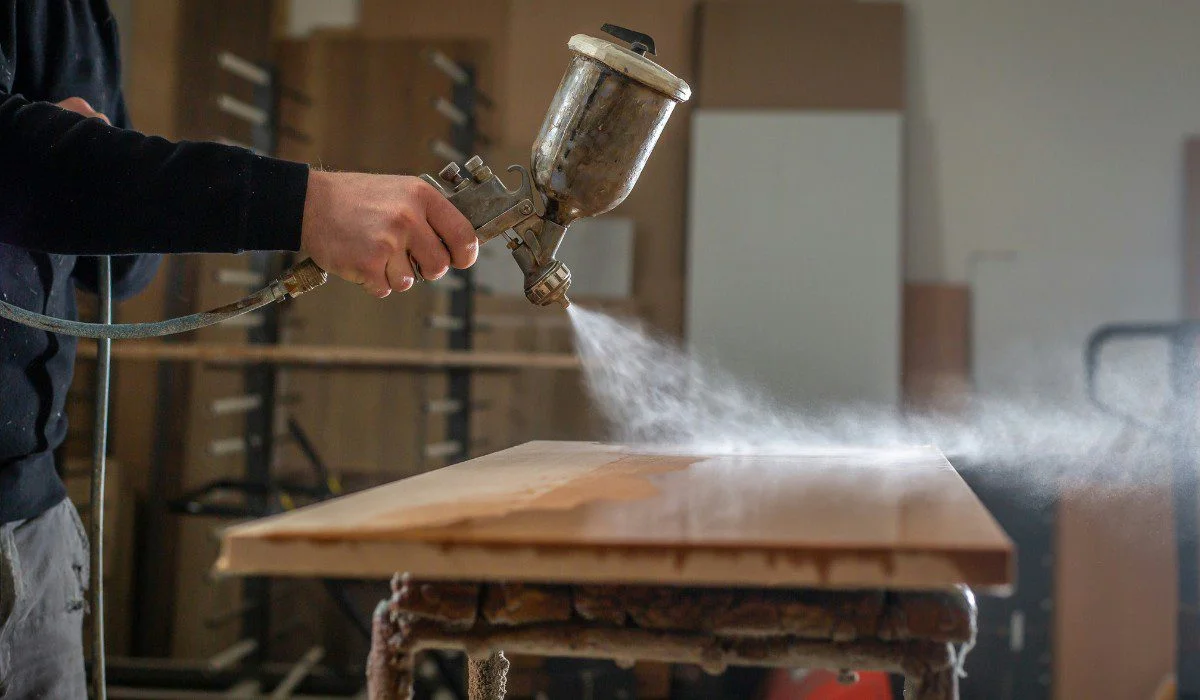Wood polishing is an essential aspect of maintaining the beauty and longevity of wooden furniture and surfaces in your home. Over time, wood can lose its lustre and appear dull due to exposure to sunlight, dust and regular wear and tear. Fortunately, polishing wood is a straightforward process that can be done with minimal equipment and basic DIY skills. In this article, we will guide you through the steps of wood polishing at home, ensuring your wooden items continue to look their best.
See also: Lacquer polish for furniture: Everything you need to know about wood finishings
Things you need beforehand
Before you begin, gather the following supplies:
- Soft clothes or microfibre towels
- Mild dish soap
- Water
- Wood cleaner (optional)
- Wood polish or wax
- Fine-grit sandpaper (optional)
- Protective gloves
Step 1: Clean the wood surface
Start by cleaning the wood surface to remove dust, dirt and grime. Mix a few drops of mild dish soap with water in a bowl. Dampen a soft cloth with this mixture and gently wipe the wood. Avoid using too much water, as it can damage the wood. For tougher stains or sticky residue, a commercial wood cleaner can be more effective. Once cleaned, use a dry cloth to wipe away any moisture.
Step 2: Light sanding (Optional)
If the wood surface is uneven or has old polish that needs to be removed, light sanding may be necessary. Use fine-grit sandpaper and gently sand the surface in the direction of the wood grain. This step is optional and primarily for surfaces that require more extensive refinishing. After sanding, remove all dust with a clean, dry cloth.
Step 3: Apply wood polish or wax
Select a suitable wood polish or wax for your furniture. There are various types, including oil-based, water-based and wax-based polishes. Read the manufacturer’s instructions for application. Apply the polish or wax with a clean cloth, working in small sections and following the grain of the wood. Ensure even coverage without applying too much product.
Step 4: Buff the surface
After applying the polish or wax, let it sit for the time specified by the product instructions. Then, take a clean, dry cloth and gently buff the surface. Buffing helps in achieving a smooth, shiny finish. For extra shine, you can buff the surface a second time with a fresh cloth.
Step 5: Maintain regularly
To keep your wood furniture and surfaces looking great, regular maintenance is key. Dust them regularly with a soft cloth or duster. Depending on usage and exposure, polish the wood every few months to maintain its shine and protect the surface.
Tips for effective wood polishing
- Always test the polish or wax on a small, inconspicuous area first to ensure it doesn’t damage the wood.
- Do not use silicone-based sprays or harsh chemicals, as they can damage wood over time.
- Wear protective gloves when handling wood polish or wax to protect your skin.
FAQs
How often should I polish my wood furniture?
Generally, polishing wood furniture every three to six months is recommended to maintain its appearance and protect the surface. However, this can vary based on the usage and exposure to sunlight and other environmental factors.
Can I use olive oil or other natural oils for wood polishing?
While natural oils like olive oil can temporarily enhance the wood's appearance, they are not recommended for long-term use. These oils can go rancid and attract dust and grime. Commercial wood polishes or waxes are formulated to provide better protection and a more lasting finish.
What is the difference between wood polish and wax?
Wood polish, typically oil-based, penetrates the wood and nourishes it, providing a natural shine. Wood wax, on the other hand, provides a protective coating on the surface. Wax can give a higher shine and is more durable but may require more effort to apply.
Can polishing remove scratches from wood?
Light polishing can help minimise the appearance of fine scratches. However, deeper scratches may require sanding or the use of a wood filler before polishing.
Is it necessary to sand the wood before polishing?
Sanding is not always necessary, especially for well-maintained surfaces. It’s typically required when there’s existing damage, unevenness, or old layers of polish or paint that need to be removed.
How do I know which type of polish is best for my wood furniture?
Consider the type of wood and the desired finish. Oil-based polishes work well for most woods, providing moisture and shine. If you are looking for a more durable, longer-lasting finish, a wax-based polish might be preferable.
Is it safe to polish antique wood furniture?
Yes, but it's important to be gentle and use products designed for antique wood. Always test the product on a small, hidden area first. If in doubt, consult a professional restorer, especially in the case of valuable antiques.
| Got any questions or point of view on our article? We would love to hear from you. Write to our Editor-in-Chief Jhumur Ghosh at jhumur.ghosh1@housing.com |

Khushi Jha, a graduate in history and political science from the University of Delhi, doesn’t restrict herself to a single domain. Her passion for writing has led her to explore a wide spectrum of topics, ranging from fashion, health and lifestyle to technology, real estate and finance. She has written for platforms like TheVoiceOfWoman, Techsunk, Fitmist and Menskool, among others. When free, she enjoys reading books, including fiction, history and geopolitics.












